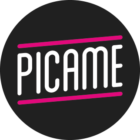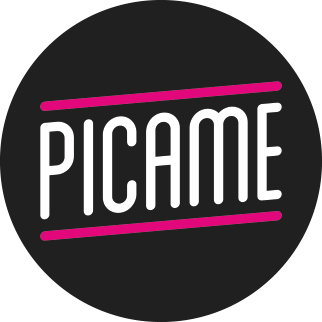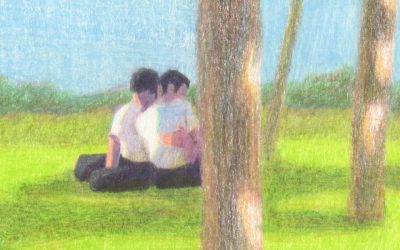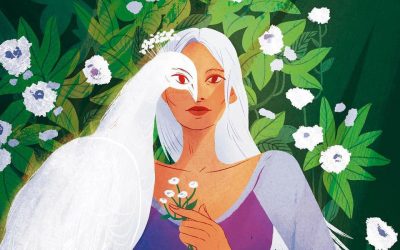[English version along the post]
Illustratore famoso e pluripremiato, fresco vincitore di una Gold Medal dalla NY Society of Illustrators per le copertine della collana Bukowski edita da Feltrinelli, in pochi ancora non conoscono Emiliano Ponzi, e quei pochi lo stanno per scoprire autore della locandina dell’attuale Festival di Sanremo. In un periodo di lavoro frenetico, tra conferenze stampa dalla città dei fiori e aerei per Berlino, in cui inaugurerà la mostra “Inferno” con Lorenzo Mattotti il 25 febbraio, ci ha concesso un’intervista esclusiva in cui parla con profondità e franchezza del proprio lavoro, della carriera e dà qualche anticipazione sui prossimi importanti progetti.
Ciao Emiliano, bentornato su PICAME. Sappiamo che stanno per succedere delle cose importanti, puoi darci qualche notizia in anteprima?
Ciao! Nei prossimi mesi verrà pubblicata una monografia per un editore americano che mi porterà a diversi eventi e presentazioni negli USA. A breve sarà rilasciato un progetto di animazione realizzato per un grosso brand Italiano di food e nel 2015 uscirà un libro interamente progettato da me per un grosso editore USA.
Sei l’autore del manifesto del Festival di Sanremo 2014, un addetto ai lavori molto speciale quindi, che vive l’evento dall’interno, con tanto di fotografie postate live, dalla sala stampa. Come ci sei arrivato, e come vivi questa esperienza?
Tutto avviene con una certa naturalezza, una telefonata, alcune email. Dal di dentro è tutto molto più vicino. Sono contento di aver realizzato il manifesto, certamente è un onore essere scelti per un evento così rappresentativo del nostro paese e per il nostro paese, un momento in cui oggi come 50 anni fa si curiosa davanti alla TV sbirciare il palco, la scalinata, gli ospiti e ascoltare la selezione dei cantanti in gara. Magari in passato aveva quasi un’aura di sacralità, oggi è chiaramente vissuto in maniera più disincantata ma racconta tanto sulla nostra storia di italiani. Come sempre ho cercato di rappresentare poche cose, una sintesi tra passione, esibizione, eleganza, vocalità e l’immancabile riferimento al simbolo del fiore che in questo caso diventa microfono.
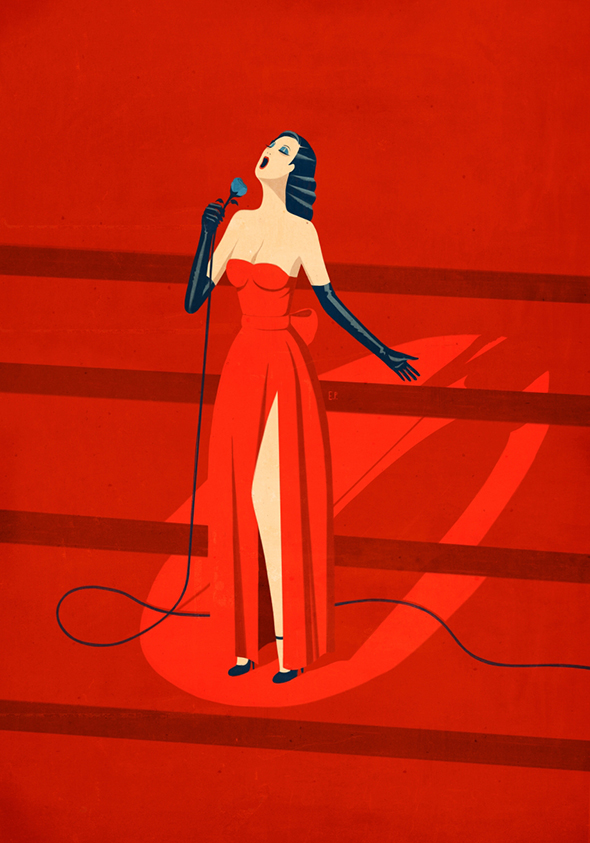
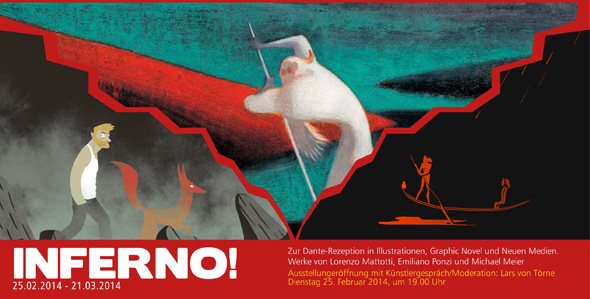
Hai realizzato una monografia, “10×10”, come le misure del piccolo studio in cui hai iniziato la tua carriera, fatta di immagini e messaggi, mail delle persone con cui hai lavorato, spesso entusiaste. Com’è cambiata la tua vita negli ultimi 10 anni, quali sono le qualità che più di tutto hai dovuto impegnare per arrivare ai successi di oggi? Cambieresti qualcosa se potessi tornare indietro?
10×10 era l’unico spazio fisico vissuto, un mondo miniaturizzato, lavoravo dove dormivo, mangiavo dove lavoravo scostando lo schermo dal tavolo per far posto al piatto. Negli ultimi anni è cambiato molto ma non l’attitudine con cui affronto a questo tipo di lavoro. È cambiata la condizione logistica non tanto per un discorso economico ma perché ho preso consapevolezza che ogni cosa ha bisogno di un proprio luogo e un proprio spazio specifico. Questo lavoro ti porta molto dentro quasi facendoti dimenticare il mondo esterno che va vissuto e non solo rappresentato. In questo senso, o comunque nel mio caso, ho sentito l’esigenza di confinarlo a un -importante- aspetto della vita.
Credo che la tenuta di strada sia una delle carte vincenti nel perseguire qualsiasi tipo di obiettivo, questo è possibile solo se non ci si culla nell’idea di un “piano B”. Spesso cito il trapezista che si lancia nel vuoto senza rete di protezione, se fallisce è andato. La rete di protezione è qualsiasi tipo di alternativa alla strada scelta, un lavoro da graphic designer in uno studio, l’impiegato nella mia città di origine. Se ci mettiamo in condizione di avere un solo percorso e uno soltanto succede una cosa molto strana, in maniera sinergica tutto il tuo essere tende in quella direzione e non c’è nessuno spazio perché scivoli la presa dal trapezio. Sono dell’idea che anche nel nostro passato le cose vadano in un modo per una ragione non per fatalismo ma per constatazione oggettiva. Guardando indietro penso avrei forse voluto buttarmi di più o prima ma se non è successo probabilmente avevo le mie ragioni di insicurezza o altro dunque non poteva che essere così.
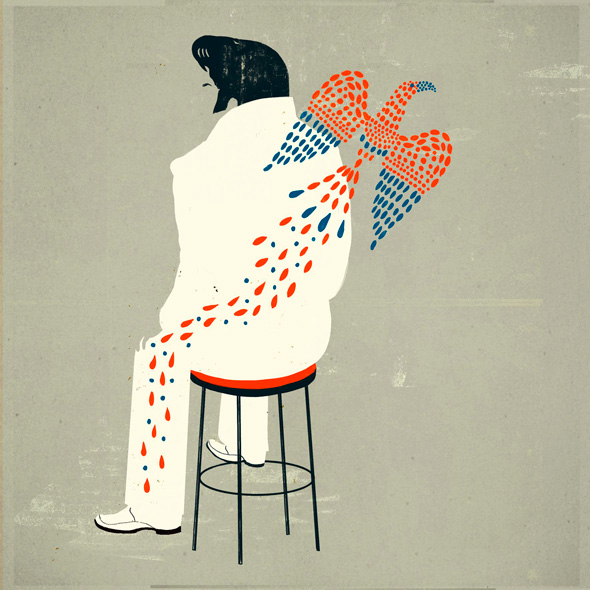
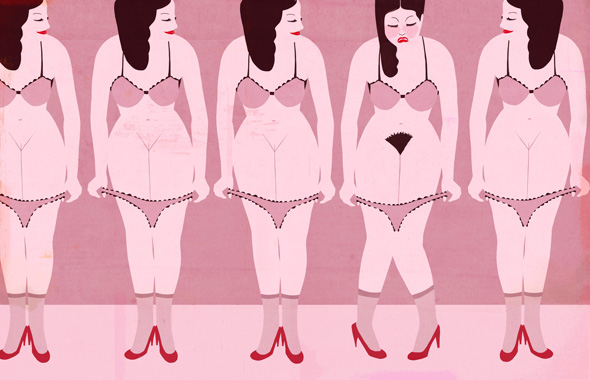
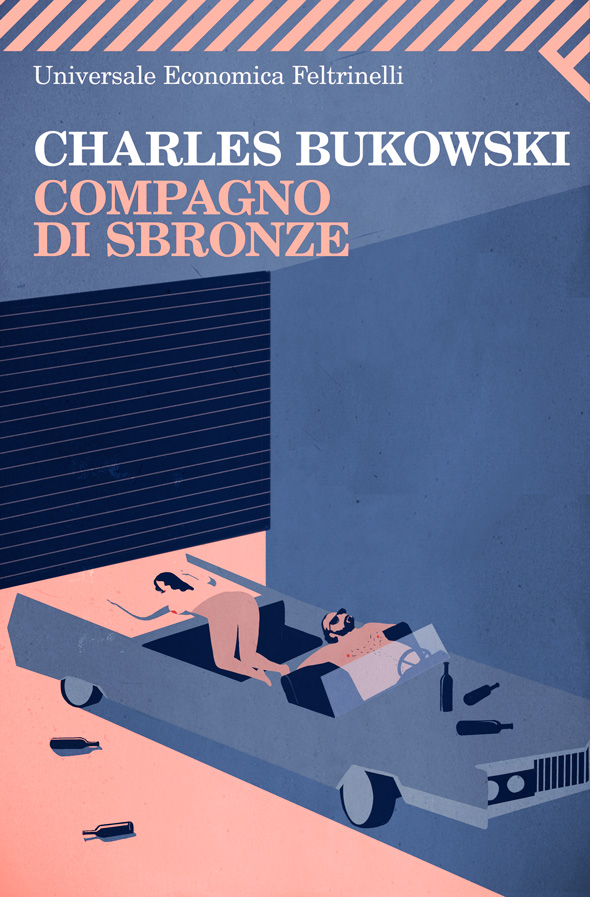
La professione di illustratore costringe in un certo senso a rimanere molto spesso soli con sé stessi: come vivi il tuo lavoro, quali sono i pregi e quali i difetti?
Nella monografia faccio un parallelismo tra la stanza e una cella monastica. Disegnare è mimesi e sottrazione del mondo, e il processo di comprensione e distillazione delle forme e dei colori è un qualcosa che non può avere nessuna valenza corale perché ad un cervello equivale una visione delle cose. La sensibilità è soggettiva per definizione. La solitudine è parte di ogni processo creativo, anche in gruppi di lavoro l’intuizione viene sempre ad uno solo poi certo può essere migliorata ed elaborata assieme. Ovviamente si passa del tempo in solitudine ma non è una condizione sterile, tutt’altro è gravida di senso, è uno spazio di lavoro indispensabile.
Sei un illustratore acclamato e pluripremiato, come vedi il futuro, ci sono desideri che non hai ancora realizzato?
Questo è un lavoro nella misura in cui c’è tanto di razionale e riferito al mercato ma considerarlo solo un lavoro sarebbe una grossa svalutazione: Art and craft. Mi auguro di trovare sempre l’entusiasmo di fare meglio di ieri, di continuare ad essere equilibrista tra l’eterna lotta tra quello che ho in mente e quello che realizzo e auspico che la mia “migliore” illustrazione sia quella che disegnerò domani.
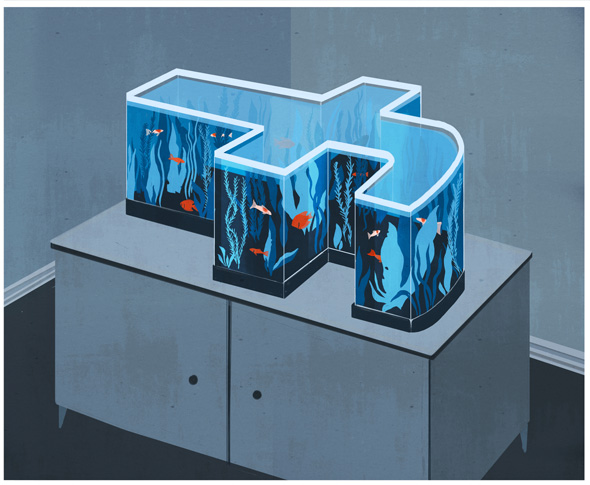
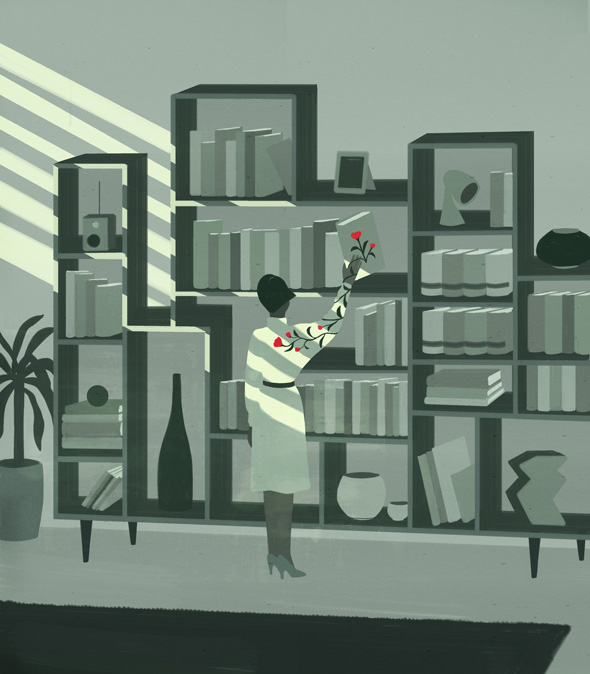
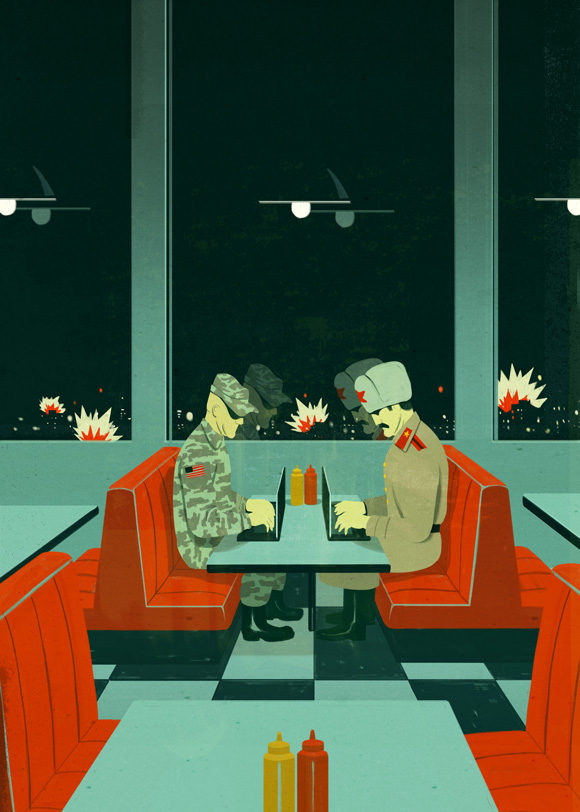
So che non ami fare i nomi dei tuoi modelli nel campo dell’illustrazione, ma ci sono nomi in ambito letterario, cinematografico o artistico a cui ti senti particolarmente legato, che ti hanno influenzato o da cui trai ispirazione?
L’ispirazione non credo sia solo lo sfogliare annual, pagine web. Sono molto convinto che potenzialmente tutto arricchisca se lo si guarda con la giusta lente, un filtro colorato, un prisma. Temo sempre di perdere lungo la strada qualche grande maestro quando cito: il tributo a chi ha fatto bene in passato è fondamentale, è su quello che si costruisce qualsiasi nuovo stile o evoluzione. Quando ho iniziato ho guardato molto al mondo americano dell’illustrazione, da Charly Harper a Brad Holland a Istvan Banyai così come alla tradizione francese e al nostrano Lorenzo Mattotti con il quale assieme al tedesco Michael Meier inaugureremo la mostra sull’Inferno il prossimo 25 febbraio all’Istituto Italiano di Cultura. È un grande onore quando si ha la possibilità di esporre con quello che hai sempre considerato un modello. Nell’arte ho guardato molto Hopper, Alex Katz, Mark Rothko, Chuck Close piuttosto che la pittura più classica o la grafica di inizio secolo scorso, Bauhaus, la grande tradizione dei manifesti pubblicitari italiani. Non credo ci sia alternativa all’essere onnivori.
Che consiglio ti senti di dare a chi intraprende la carriera di illustratore?
Ogni strada è diversa soprattutto in un lavoro poco codificato come il nostro, non esiste un iter preciso che possa portarti ad essere promosso da impiegato a dirigente. C’è qualche linea guida come la solidità dello stile, il coraggio di buttarsi senza sfuggire ad un confronto sano epurato da invidie che sia in grado di migliorarci.
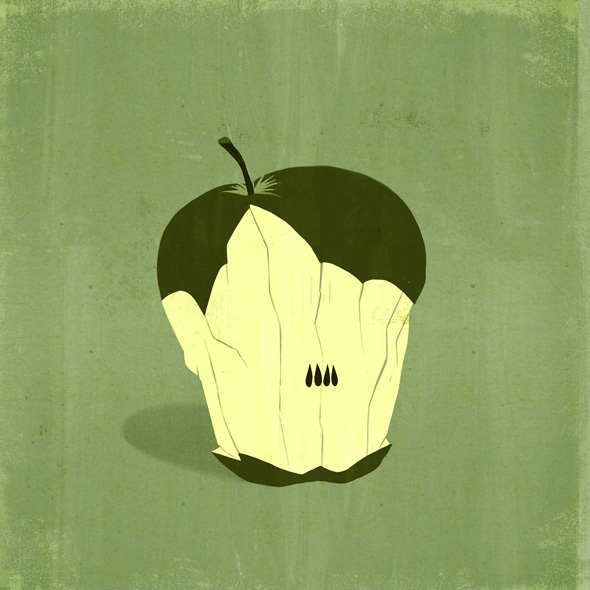
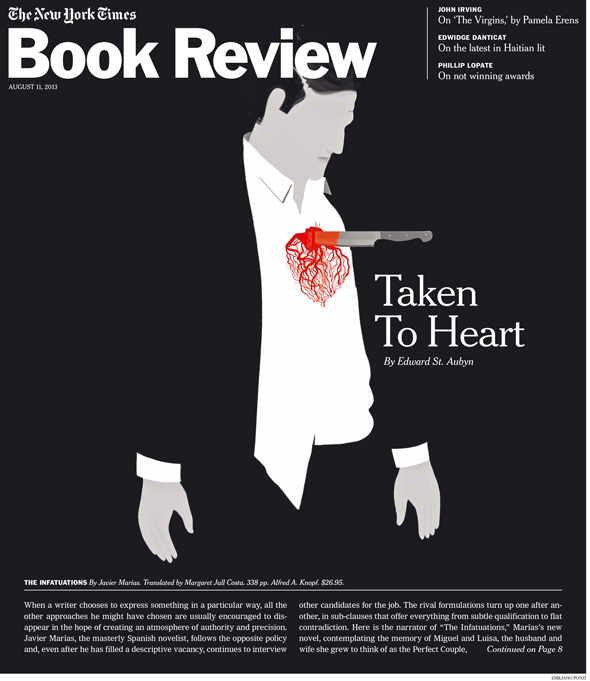
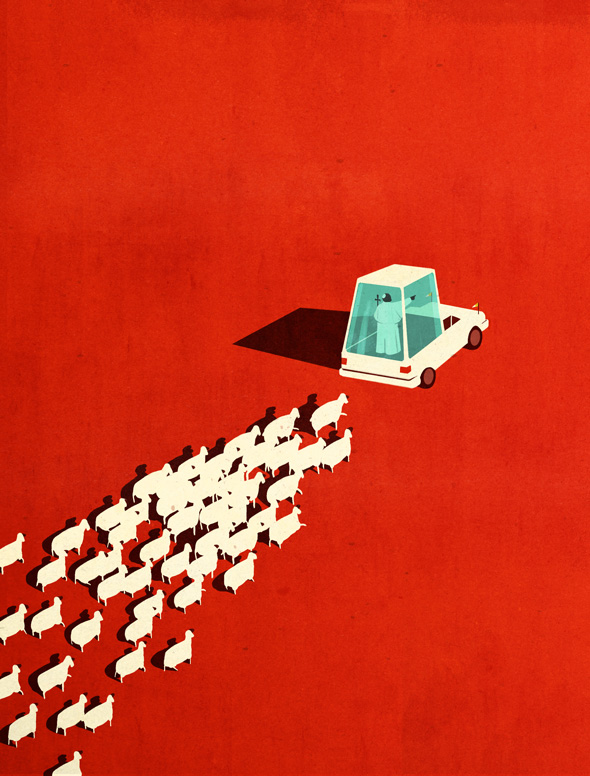
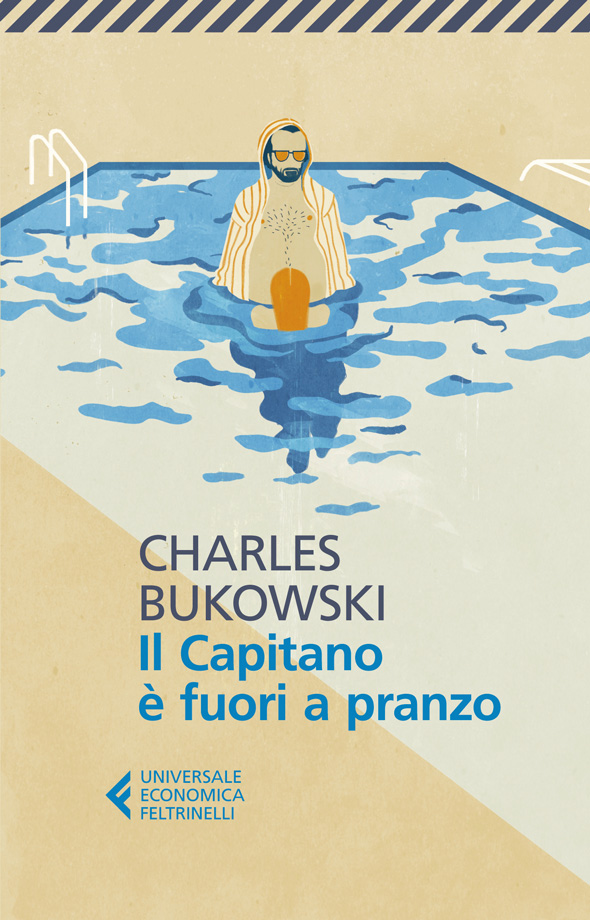
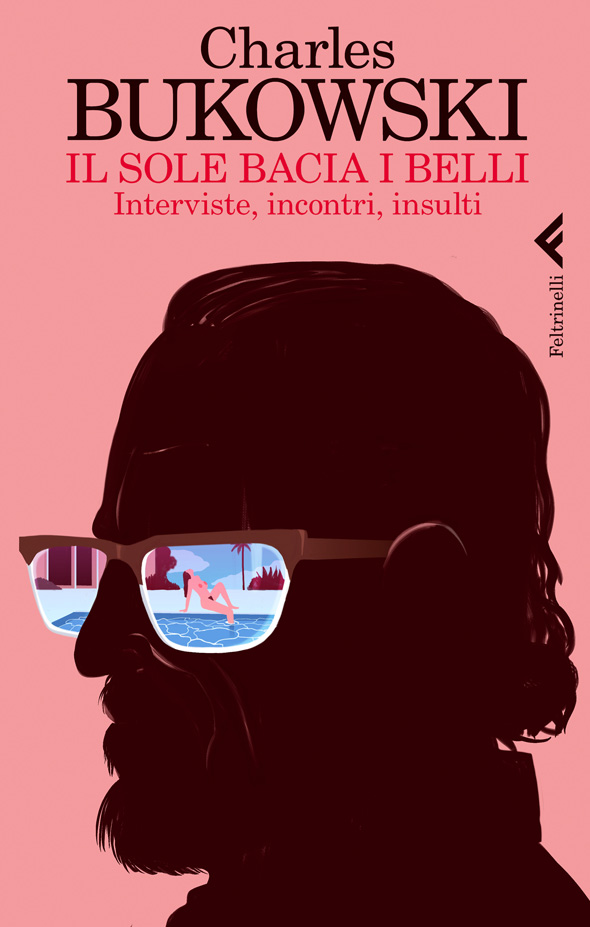
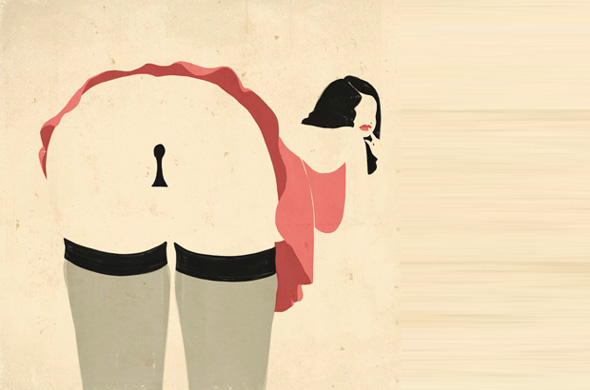
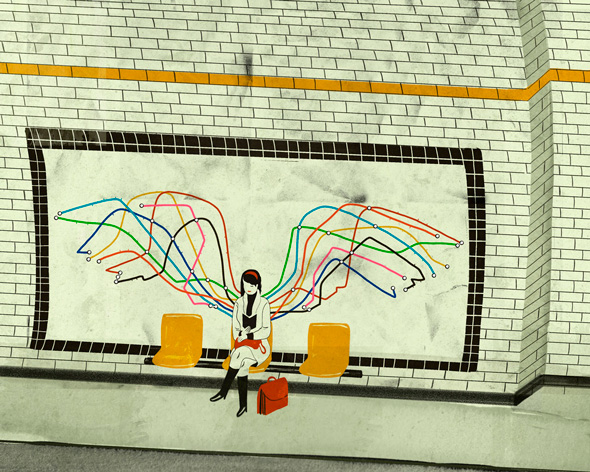
—
ENG
Just a few people don’t know Emiliano Ponzi, famous and multi-awarded illustrator, new winner of the Gold Medal released by the NY Society of Illustrators for the covers of Bukowski series published by Feltrinelli, and those are about to discover him as author of the actual Festival di Sanremo poster.
During this hectic working period, among press conferences in Sanremo and flights to Berlin, where he will unveil the exhibition “Inferno” with Lorenzo Mattotti on February the 25th, he answered to our questions by an exclusive interview in which he talks about his work and his career with humanity and directness and he tells some previews related to his next projects.
Hi Emiliano and welcome back to PICAME. We know that some things are going to happen, can you tell us any previews?
During the next months a monography for an American editor that will lead me to several events and presentations across USA will be published. In a few time an animation project realized for a great Italian food brand will be released and in 2015 a book wholly projected by me for an important USA publisher will be issued.
You are the author of the Festival di Sanremo 2014 poster, a very special insider who lives the entire event with his own eyes. How did you reach it and how do you live this experience?
Everything happens with the greatest naturalness, a phone call and some emails. From the inside it’s all very closer. I’m really happy I realized the poster, of course it’s been an honour to have been chose for such a great representative event of our country, a moment during which everybody looks around the stage, the stair, the guests and listens to the singers selected, now as 50 years ago. Probably in the past it was almost surrounded by a kind of sacredness and today it’s seen in a disenchanted way, but it’s still considered an important portrait of the Italian history. As I always tried to do, I represented a few things, a fusion of passion, exhibition, elegance, vocals and the unfailing connection to the flower becoming a microphone.
You have realized a monography, “10 x 10”, as the measures of the little studio in which your career has begun, made of images and and messages, mails of enthusiast people you worked with. How did your life change in the last 10 years, which are the qualities you needed to use to achieve your goals? Would you change anything if you could come back?
10×10 was the only physical area where I used to live, work, eat and sleep. In the last years a lot has changed except the attitude with whom I face my job. I needed to change my logistic condition because I felt the urgency to give each thing its specific living space. This work really absorbs you from the inside until you forget the external world. So, I decided to restrict it in an (important) aspect of my life. I believe that the roadworthiness is one of the trump cards to reach every target. If you fail and you don’t have any protection, you are gone. For protection I mean every alternative way to the chosen one. When you walk through a unique road, your behaviour aim for that direction and there’s no way of getting wrong. Looking back into my past, maybe I could get more involved in it but probably I had my right reasons not to carry on.
The profession of illustrator force to belive alone: how do you live your work, which are the strengths and th weaknesses?
In the monography I draw parallels between the room and a monastic pokey. Drawing is mimesis and abstraction of the world, and the process of understanding and distillation of shapes and colors is something that can’t have any global value because to every brain there is always opposed a different point of view. The sensivity is subjective by definition. The isolation is part of every creative process, even inside working group, intuition comes out from one component and then improved and perfectioned together. Solitude is an essential working condition.
You are a famous and multi-awarded illustrator. How do you see your future, do you have any hidden desires?
You can consider this as a job when its shapes are market oriented. I hope I’ll always find the enthusiasm to do better than yesterday, to keep going towards amongst the eternal fight between my mind and my artworks. And I really hope that my best illustration will be the one I draw tomorrow.
I know you don’t like to talk about your models in the field of illustration, but are there any names in the sphere of literature, cinema or art which inspire you?
I don’t think inspiration means flipping through annual, web pages… in my opinion everything can be potentially considered interesting if you look at it in the right way. I’m always afraid to lose something along the road: it’s necessary to pay a particular tribute to the masters of the past, because they are the fundamental foundations on which you build every new style.When I started drawing, I looked at the American illustration world, from Charly Harper to Brad Holland and Istvan Banyai as the French tradition and Lorenzo Mattotti, with whom I will unveil the exhibiton about Inferno on February the 25th to the Italian Institute of Culture, together with Michael Meier. It’s such a great honour when you have the chance to work with your idol. I was pretty much influenced by Hopper, Alex Katz, Mark Rothko, Chuck Close rather than classical painting or the graphic of the beginning of the century, Bauhaus, the great Italian advertising posters tradition. There’s no option, you have to be omnivore.
What kind of advice would you like to give to the next illustrators?
Every road is different first and foremost in an unencoded job as this, there’s no a specific course to get a promotion. There are some guidelines as the solidity of style, the courage to risk without escaping from a sound debate able to improve ourselves.
